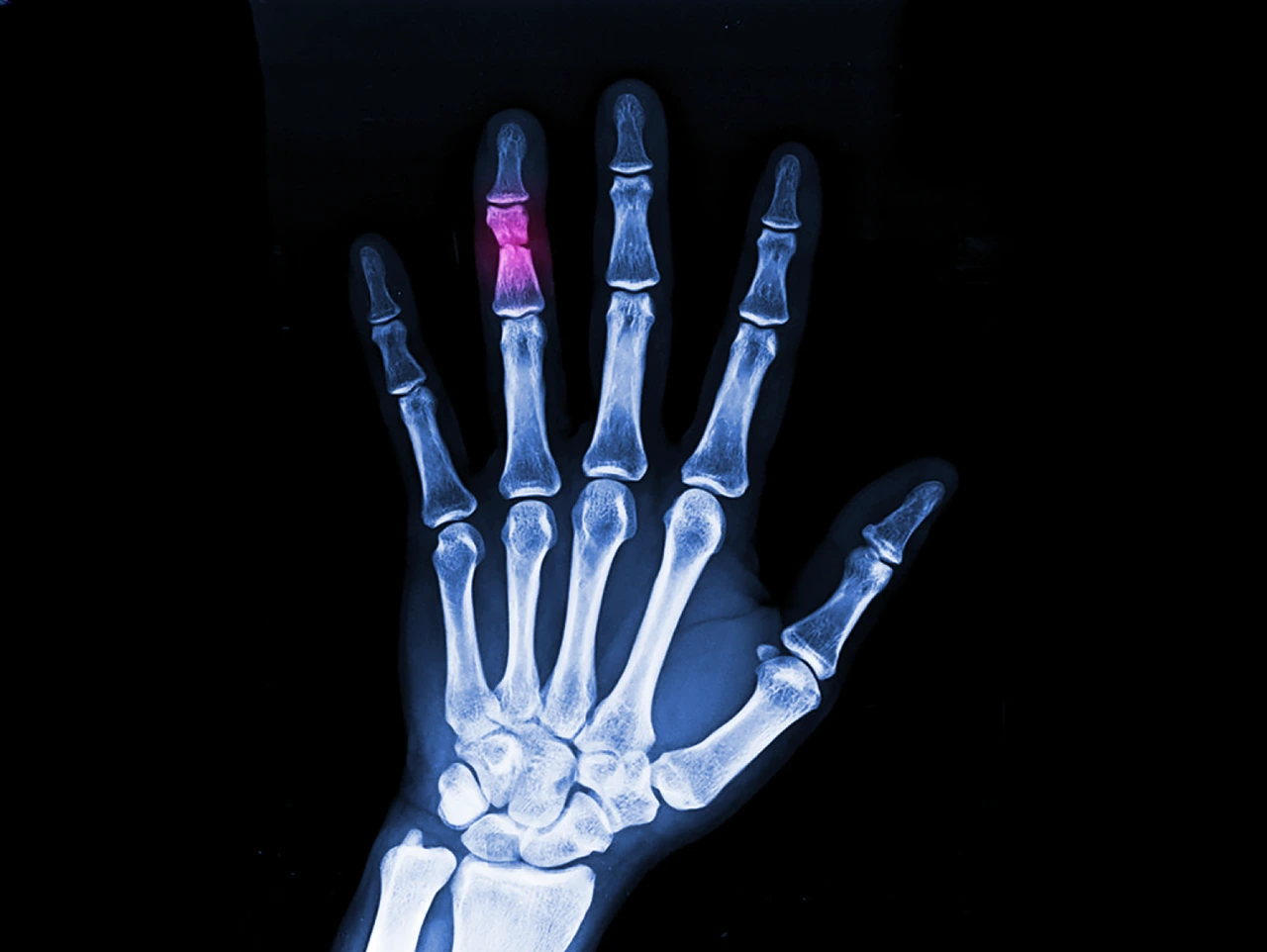Contact us
Precision Medicine
What is finger fracture?
26 September 2025
The term finger fracture refers to a bone injury in one of the fingers or toes. It can range from a slight crack to a complete break of a phalanx, caused by:
- Falls.
- Hits.
- Crushing injuries.
- Stepping on the finger.
- Working with tools that can hurt or injure a finger.
The following conditions can increase the risk of a finger fracture:
- Congenital bone conditions.
- Poor nutrition.
- Contact sports.
- Violence.
Finger fractures are most common in older adults, but anyone can suffer from them.
Signs and symptoms Finger Fracture
A finger fracture usually presents with intense pain in the affected digit, swelling, visible deformity, and difficulty or inability to move the finger. There may also be a hematoma or bruise, as well as sensitivity to the touch.
Sometimes, the finger may adopt an abnormal position or be visibly out of place due to bone displacement.
If there is nerve involvement or damage to the surrounding tissues, the patient may also experience stiffness and numbness.
Complications that can arise from a finger fracture include poor bone healing, known as pseudoarthrosis, permanent deformities, joint stiffness, and loss of mobility. In rare, severe cases, there can also be injuries to nerves, blood vessels, or tendons, which worsen the function of the finger and can lead to chronic pain or sensory problems.
How a Finger Fracture Is Diagnosed
Initially, a finger fracture is diagnosed through a clinical evaluation based on symptoms and a physical exam, where the doctor inspects the deformity, mobility, and looks for specific points of pain.
Additionally, sensitivity and circulation tests are performed to rule out damage to nerves or blood vessels. The functionality of the finger is evaluated, along with the presence of any open wounds that could complicate the fracture.
To confirm a finger fracture, an X-ray of the affected hand or foot is generally used. This allows doctors to see the type of fracture, its exact location, and if there is any displacement of the bone fragments.
If associated soft tissue damage or small fractures not visible on an X-ray are suspected, a CT scan or MRI may be used for a more precise diagnosis.

Treatment Finger Fracture
Initial treatment for a finger fracture involves immobilization with splints or casts to ensure the bone heals correctly and to prevent movements that might delay recovery.
If it’s an undisplaced fracture, immobilization is often enough, along with the use of analgesics to manage pain and a period of rest.
However, if the fractures are displaced, unstable, or affect function, a manual reduction or, in some cases, surgical intervention may be necessary. This involves placing pins, screws, or plates to hold the bone in the correct position.
Afterward, physical therapy is essential for regaining both mobility and strength after the period of immobilization.
At the Orthopedics and Traumatology Center of Centro Médico Saludora, we can provide you with specialized care. Contact us!
Fuentes:
How can we help you?

Ricardo Ostos
Content CreatorLearn more about Ricardo on LinkedIn